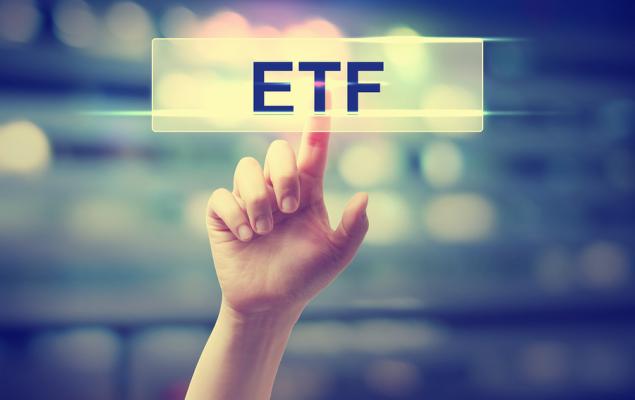5 Defensive ETF Bets For Dealing With Fed Rate Hike Woes

Image: Bigstock
Wall Street has been volatile since the beginning of 2022 as 10-year Treasury yields rose. The Federal Reserve has also hinted towards taking aggressive measures to manage rising inflation levels. It is expected to begin raising its benchmark interest rate in March. In fact, Goldman Sachs is expecting the Federal Reserve to increase interest rates four times this year, according to a CNBC article.
There are certain other factors that are clouding the U.S. investment market. Investors are waiting for the fourth-quarter earnings results and the outlook to be presented by corporate America for 2022. Moreover, certain economic data releases like retail sales, industrial production, and U.S. consumer sentiment data may put further light on the U.S. economic recovery.
Against this backdrop, let’s take a look at some defensive ETF options that investors can consider, like Vanguard Dividend Appreciation ETF (VIG - Free Report), Invesco S&P 500 Low Volatility ETF (SPLV - Free Report), iShares MSCI USA Quality Factor ETF (QUAL - Free Report), SPDR S&P MIDCAP 400 ETF Trust (MDY - Free Report), and Vanguard Consumer Staples ETF (VDC - Free Report).
According to UBS strategists led by senior economist Brian Rose, “We expect the US 10-year yield to move... to around 2% over the coming months, as investors digest the Fed’s more hawkish stance along with further elevated inflation readings. That said, we don’t expect a sharp rise in yields that will imperil the equity rally. Year-over-year inflation is still likely to peak in the first quarter and recede over the year,” as mentioned in a CNBC article.
Defensive ETFs in Focus
Given the current market conditions, we have highlighted some ETFs.
Vanguard Dividend Appreciation ETF (VIG - Free Report)
Dividend aristocrats are blue-chip, dividend-paying companies with a long history of increasing dividend payments year-over-year. Moreover, dividend aristocrat funds provide investors with dividend growth opportunities compared to other products in the space, although they might not necessarily have the highest yields.
These products also form a strong portfolio, with a higher scope of capital appreciation against simple dividend-paying stocks or those with high yields. As a result, these products deliver a nice combination of annual dividend growth and capital-appreciation opportunities, and they are mostly good for risk-averse, long-term investors.
The Vanguard Dividend Appreciation ETF is the largest and the most popular ETF in the dividend space, with AUM of $68.05 billion. VIG follows the S&P U.S. Dividend Growers Index. Vanguard Dividend Appreciation ETF charges 6 basis points (bps) in annual fees (read: 5 Top-Ranked ETFs to Add to Your Portfolio for 2022).
Invesco S&P 500 Low Volatility ETF (SPLV - Free Report)
The demand for funds with “low volatility” or “minimum volatility” generally increases during tumultuous times. These seemingly-safe products usually do not surge in bull market conditions, but they do offer more protection than the unpredictable ones. These funds are less cyclical, providing more stable cash flow than the overall market.
The Invesco S&P 500 Low Volatility ETF provides exposure to stocks with the lowest realized volatility over the past 12 months. The fund is based on the S&P 500 Low Volatility Index and holds 102 securities in its basket. The Invesco S&P 500 Low Volatility ETF has AUM of $9.61 billion and charges an expense ratio of 25 bps, as stated in the prospectus (read: Here's Why it Makes Sense to Invest in Low-Volatility ETFs Now).
iShares MSCI USA Quality Factor ETF (QUAL - Free Report)
Quality stocks are rich in value characteristics with healthy balance sheets, high return on capital, low volatility, and high margins. These stocks also have a track record of maintaining or increasing sales and earnings growth.
Compared to plain vanilla funds, these products help lower volatility and perform better during market uncertainty. Furthermore, academic research has proven that high-quality companies constantly provide better risk-adjusted returns than the broader market over the long-term.
The iShares MSCI USA Quality Factor ETF provides exposure to the large- and mid-cap stocks exhibiting positive fundamentals (high return on equity, stable year-over-year earnings growth, and low financial leverage) by tracking the MSCI USA Sector Neutral Quality Index. With AUM of $24.23 billion, QUAL charges 0.15% in fees (read: Quality ETFs Appear Attractive as Fed Rate Hike Nears).
SPDR S&P MIDCAP 400 ETF Trust (MDY - Free Report)
Considering the mixed sentiment, mid-cap funds are gaining attention as they provide both growth and stability compared to their small-cap and large-cap counterparts. As such, investors seeking to capitalize on the strong fundamentals but worried about uncertainty should consider mid-cap ETFs.
The SPDR S&P MIDCAP 400 ETF Trust seeks to provide investment results that, before expenses, correspond generally to the price and yield performance of the S&P MidCap 400 Index. MDY has AUM of $21.65 billion. The SPDR S&P MIDCAP 400 ETF Trust charges a fee of 23 bps (see: all the Mid Cap ETFs here).
Vanguard Consumer Staples ETF (VDC - Free Report)
The consumer staples sector is known for its non-cyclical nature and acts as a safe haven during unstable market conditions. Moreover, like utility, consumer staples is considered a stable sector for the long-term as its players are likely to offer decent returns.
During an economic recession, investors can consider parking their money in the non-cyclical consumer staples sector. This high-quality sector, which is largely defensive, has been found to have a low correlation factor with economic cycles.
The Vanguard Consumer Staples ETF seeks to track the performance of the MSCI US Investable Market Consumer Staples 25/50 Index. With AUM of $6.66 billion, VDC has an expense ratio of 10 bps.
Disclaimer: Zacks.com contains statements and statistics that have been obtained from sources believed to be reliable but are not guaranteed as to accuracy or completeness. References to any ...
more


